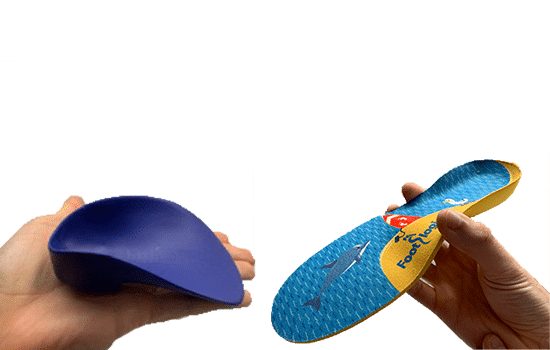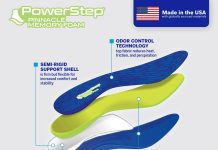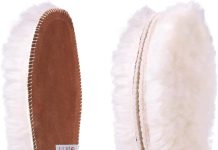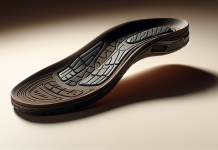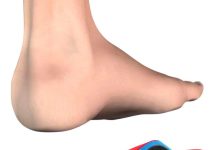In the eternal quest for comfort and support, finding the correct type of insoles can make all the difference. When choosing between full-length or 3/4-length insoles, there are various factors to consider.
Each option has its advantages and disadvantages, affecting not only how your feet feel but also how they function. By understanding the pros and cons, you can make an informed decision that keeps your feet happy and healthy.
Arch Support
Full-length insoles provide more comprehensive arch support compared to 3/4-length insoles. The arch area of the foot is crucial for maintaining proper alignment and preventing strain on the muscles and ligaments.
With full-length insoles, the entire arch is supported, which helps distribute weight evenly and provides stability. This makes them an excellent option for individuals with high arches or requiring additional support.
On the other hand, 3/4-length insoles offer less support to the arch area than full-length insoles. They only cover part of the foot, leaving the front portion unsupported. While they may be sufficient for individuals with average arches or those who don’t require extensive support, they may not provide enough cushioning and stability for those with higher arches or specific foot conditions that call for more comprehensive arch support.
Heel Cushioning
Full-length insoles provide cushioning to the entire heel area. This is particularly beneficial for individuals who experience heel pain, plantar fasciitis, or other heel-related issues. By providing a soft and supportive surface, full-length insoles help absorb shock and lessen the impact on the heel with each step. They can provide relief and improve overall comfort, especially for those who spend much time on their feet or engage in high-impact activities.
In contrast, 3/4 length insoles offer cushioning only to the back of the heel. While this can still provide some comfort and support, individuals who require more extensive cushioning for the entire heel area may find full-length insoles more suitable. The limited cushioning provided by 3/4 length insoles may not offer enough relief for individuals with chronic heel pain or conditions such as Achilles tendinitis.
Toe Space
Full-length insoles may reduce toe space in some footwear, which can be uncomfortable for individuals with wider feet. Since full-length insoles cover the entire length of the shoe, they may take up additional space and leave less room for the toes.
This can lead to discomfort, especially for individuals with wider feet or those who prefer more wiggle room for their toes. It is essential to consider the fit of both the insole and the footwear to ensure proper comfort and prevent any unnecessary pressure or squeezing of the toes.
On the other hand, 3/4 length insoles leave more toe space, allowing for better ventilation and a more comfortable fit for individuals with wider feet. By not extending to the front of the shoe, 3/4 length insoles allow for more room for the toes, reducing the chances of cramped or pinched toes. This can be particularly beneficial for individuals who require extra toe space or suffer from conditions such as bunions or hammertoes.
Shoe Fit
Full-length insoles may require a larger shoe size to accommodate the added bulk. The full coverage and thickness of these insoles can cause the shoe to feel tighter or narrower. Individuals who struggle with finding the correct shoe size or have wider feet may find it challenging to fit full-length insoles and feet comfortably in their desired size. It is essential to consider the size and fit of both the insole and the shoe to ensure optimal comfort and prevent any restrictions or discomfort.
On the other hand, 3/4 length insoles can easily fit into most shoe sizes without requiring a larger size. Their shorter length and thinner profile allow for easier insertion into the shoe, with minimal impact on shoe fit. Individuals who prefer to maintain their current shoe size or have limited options in terms of shoe sizes may find 3/4 length insoles a more convenient choice.
Versatility
Full-length insoles are suitable for all types of footwear, including high heels and dress shoes. Their full coverage and design make them versatile enough for various shoe styles without compromising comfort or support. Whether you’re wearing sneakers, boots, or even high heels, full-length insoles can provide the necessary cushioning and stability for your feet. This makes them an excellent option for individuals who frequently switch between different shoe styles or require consistent support and comfort throughout the day.
On the other hand, 3/4 length insoles are more versatile and can be used in a broader range of shoe styles. Their shorter length allows for greater flexibility and compatibility with different types of footwear. Whether you’re wearing casual shoes, athletic shoes, or even sandals, 3/4 length insoles can easily accommodate and provide the desired level of support. This versatility can be particularly beneficial for individuals who prefer a single pair of insoles that can be used across multiple shoe styles.
Breathability
Full-length insoles may hinder ventilation due to their larger size, potentially causing sweaty feet. The full coverage of these insoles may limit the airflow within the shoe, leading to increased perspiration and discomfort. While this may not concern individuals with naturally dry feet or those who don’t engage in high-intensity activities, it can be an issue for individuals with more sweat-prone feet or those who require enhanced breathability. It is essential to consider the breathability of both the insole and the footwear to maintain optimal foot hygiene and prevent excessive sweating.
On the other hand, 3/4 length insoles allow for better airflow, promoting breathability and reducing the chances of sweaty feet. The shorter length and open-toe design of these insoles allows more room for air circulation within the shoe, creating a cooler and more comfortable environment for the feet. This can be particularly beneficial for individuals who experience foot odor or excessive sweating, as it helps to maintain proper foot hygiene and prevent bacterial or fungal growth.
Ease of Use
Full-length insoles can be more challenging to insert and remove from shoes. Due to their larger size and full coverage, full-length insoles may require more effort and maneuvering to fit correctly inside the shoe. This can be inconvenient, significantly, when changing footwear frequently or when dealing with tight-fitting shoes. Individuals with limited mobility or dexterity may find it challenging to handle and adjust full-length insoles as needed.
On the other hand, 3/4 length insoles are more accessible to insert and remove, making them more convenient. Their shorter length and flexible design allow for effortless placement and adjustment within the shoe. This can save time and effort, especially when switching between different pairs of shoes or when dealing with shoes that have a snug fit. Individuals who prioritize convenience or have physical limitations may find 3/4 length insoles more suitable.
Foot Fatigue
Full-length insoles help distribute pressure evenly across the entire foot, reducing fatigue. By providing support and cushioning to the entire foot, full-length insoles help alleviate the strain and pressure that can accumulate throughout the day. This can be particularly beneficial for individuals who spend long periods on their feet or engage in activities that involve repetitive impact, such as running or standing for extended periods. With the even distribution of weight and reduced pressure points, full-length insoles can help minimize foot fatigue and promote overall comfort.
On the other hand, 3/4 length insoles may not provide as much support, leading to increased foot fatigue. The limited coverage of these insoles may result in more concentrated pressure on specific areas of the foot, causing discomfort and fatigue over time.
Individuals who require extensive support or have specific foot conditions that require extra cushioning may find full-length insoles to be more effective for reducing foot fatigue and providing overall comfort.
Durability
Full-length insoles typically offer better durability due to their larger size and extensive coverage. The added material and thickness of full-length insoles help withstand the wear and tear of daily use, making them more resistant to compression and deterioration.
This makes them a durable option for individuals who require long-lasting insoles or engage in activities that put more stress on their footwear. Regularly replacing insoles is essential to maintain their effectiveness and prevent any potential discomfort or loss of support.
On the other hand, 3/4 length insoles may wear out faster, especially in areas exposed to frequent pressure and friction. The smaller size and coverage of these insoles make them more susceptible to wear and tear, particularly in the heel and arch areas.
Individuals who engage in high-impact activities or wear their shoes for extended periods may notice faster wear and deterioration of 3/4 length insoles. Regular inspection and replacement of these insoles are necessary to ensure optimal comfort and support.
Orthotic Compatibility
Full-length insoles provide better compatibility with custom orthotics. If you require orthotic devices to address specific foot conditions or provide customized support, full-length insoles offer the necessary space and support to accommodate these devices. Their larger size and coverage ensure no interference or compromise to the effectiveness of custom orthotics. This makes full-length insoles an ideal choice for individuals who rely on orthotics for their foot health and comfort.
On the other hand, 3/4 length insoles may not fit properly with custom orthotic devices, limiting their use for individuals with specific foot conditions. The shorter length and design of 3/4 length insoles may not provide sufficient space or support for custom orthotics.
This can be a disadvantage for individuals who require orthotics but prefer the convenience and versatility of 3/4 length insoles. In such cases, it is essential to consult with a healthcare professional or orthopedist to determine the most suitable insole option that can accommodate custom orthotics effectively.
In conclusion, both full-length and 3/4-length insoles have their advantages and considerations. Full-length insoles provide more comprehensive support and cushioning, making them an excellent choice for individuals with specific foot conditions or those who require extensive support.
On the other hand, 3/4 length insoles offer greater versatility and convenience, particularly for individuals who switch between different types of footwear frequently. Assessing your needs and considering factors such as arch support, heel cushioning, shoe fit, breathability, and orthotic compatibility can help you decide between total-length and 3/4-length insoles.
Remember, the right choice ultimately depends on what will provide you with the best comfort and support for your unique feet.

